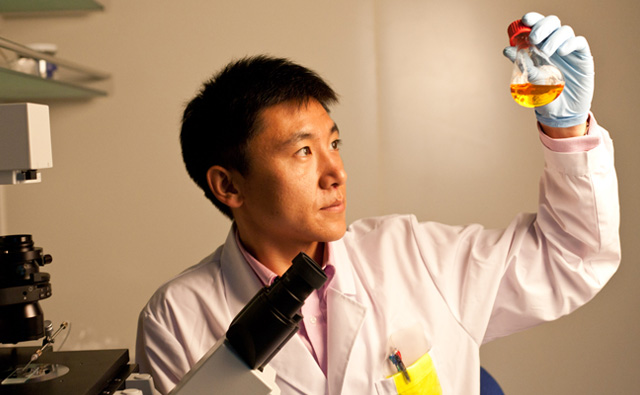Industry News, R&D
Digital Technology Drives Innovation Processes In Chemical Industry

Industry News, R&D

The early 1990s heralded the dawn of the Information Age. The rise of the Internet transformed the way we exchanged information. Phone calls were no longer the only way to communicate in real time with people across the globe. The Internet allowed us to send and receive data in the blink of an eye. Online publishing, email, and later videoconferencing made the world a smaller place.
The consequences for the business world were enormous. Order-to-delivery times diminished. Companies gained the potential to reach a more widespread customer base than ever before. With more available information and products, consumers grew more critical and more demanding. This goes both for end consumers and businesses in supply chains.
Now a new stage in the Information Age has begun: the era of the Internet of Things (IoT). Gartner explains the IoT as a worldwide web of physical devices with embedded technology. Using this technology, devices can sense and communicate data. They can also interact with their external environment or internal states. In other words, humans used to instigate and manage the exchange of information. Today, smart devices and artificial intelligence do it for us.
These new technologies combine with a deluge of devices to create hyperconnectivity. Intel estimates that by 2020 there will be 200 billion connected devices. This doesn’t just include smartphones, tablets, and computers. It includes consumer products such as cars, security systems, and health monitors. And it also includes assets used in the chemical industry. For example, many machines and other equipment come with embedded smart technology.
Another significant development is the cloud. The cloud is a term used to refer to data centers made up of servers and connected to the Internet. Because the cloud has no physical limitations, it can store enormous amounts of data. But that’s not the only remarkable thing about the cloud. It also provides vast reserves of computing power. Because it requires no physical storage, the costs are low. Plus, with sophisticated cybersecurity, companies can connect their entire network to the cloud. That means they can not only back up their data, but also use the cloud for processes that demand a lot of computing power.
Consider the immense potential of these new technologies for chemical companies. At any point in the production cycle, smart assets can collect data on a wide range of variables. (As an example, a machine can measure how much waste chemicals it generates per unit. Or it can record how much time and fuel it takes to produce a single unit.) The machine can continuously collect this data while it operates, then send the data to the cloud. Depending on what the chemical company wants, it can store the data or use it to generate analytics. These analytics can provide insights into every aspect of a company’s operations. Companies can then use these analytics to streamline existing processes and develop new ones. Their goal is, of course, the maximization of uptime, as well as optimization of their products and services.
In the 1990s, order-to-delivery time declined as Internet use became more widespread. Just like then, today’s technology can scrape off even more time. The Internet of Things connects assets, systems, and companies. Sensors in assets can automatically send data about supply levels through the network. They can then order new supplies when needed. This “no-touch order-to-delivery” system eliminates the need for human process management.
The prices of raw material vary from day to day and even from hour to hour. Chemical companies can integrate real time financial information and procurement opportunities with their systems. This means they can immediately provide their customers with the most up to date pricing. As a result, they remain more competitive.
The digitization of plant operations has a far-reaching impact. Companies can now improve safety, as well as enhance quality and increase output. The SAP report CEO Perspective: The Internet of Things for Chemical Companies mentions intelligent assets. This refers to equipment that performs diagnostics for maintenance and safety. That means the chances of accidents are reduced. Or they can adjust production schedules according to external events and material availability.
Forward-thinking chemical companies use predictive analytics to manage supplier risk and determine future spend. This way, they can establish digital procurement processes that aren’t open-ended. Instead, they can connect them to their cloud-based network of suppliers. This guarantees a closed-loop procurement process.
In the development of new products, companies can use predictive analytics to create models. Then they can analyze these models to find out what their qualities and performance are. That allows them to research the possible use and value of a new product before engineering it. Plus, they then can optimize it for cost, yield, sustainability, and compliance.